"JAVA" and "Sphere". Spherical blasting chambers 13Я
Special tasks and special products
Explosive chambers of different types were developed in our country earlier, but in the early eighties, scientific organizations were engaged in solving a special problem. For some experiments required SVK significant size with appropriate strength. The project of such a device was created at VNIIEF under the leadership of S. B. Cormer.
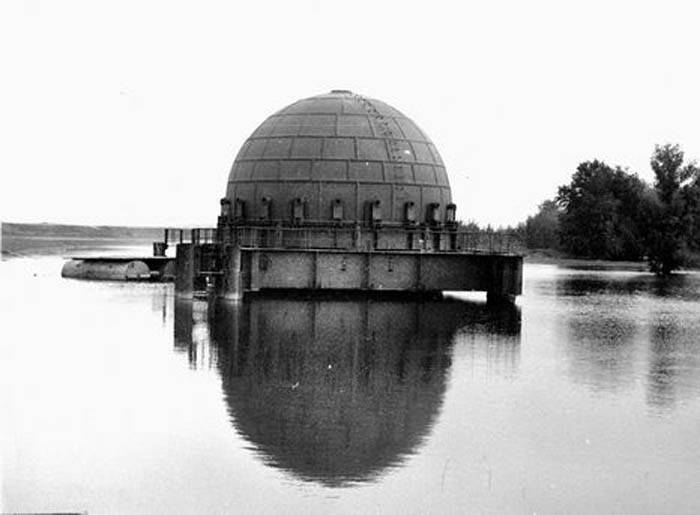
Spherical blasting chamber 13Я during transportation to the site "Galit". Photo E-maksimov.livejournal.com
SVK of record sizes received the designation 13Я. The camera was developed by the VNIIEF staff. Construction of the product and parts of related equipment was entrusted to the Sevmash shipbuilding plant, which produced submarines and had the necessary technology.
The installation of XNUMHA consists of a large-sized SVK itself and a stand for it. The camera was a sphere of armor steel grade AK-13Sh. The sphere was assembled from 36 of individual elements and equipped with two hatches in the upper and lower parts, as well as the means of mounting scientific equipment. The inner diameter of such a sphere is 169 m, volume is 12 cubic meters. The thickness of the armor walls - 910 mm. The internal mass of the VCS is 100 t. The camera had to withstand static pressure 470 atm or undermining 150 t TNT.
The camera should be mounted on a stand in the form of a strong ring with 20 plate dampers, damping vibrations. The assembly of the complex weighed 850 t. The ICS and its stand could be mounted on different bases and needed various additional equipment, both scientific and supporting.
Limited production
It is reliably known about the construction of only two ICS type 13Я. There are also unconfirmed data on some third camera and other assumptions. Nevertheless, such data do not find confirmation in the available sources, and sometimes contradict them.
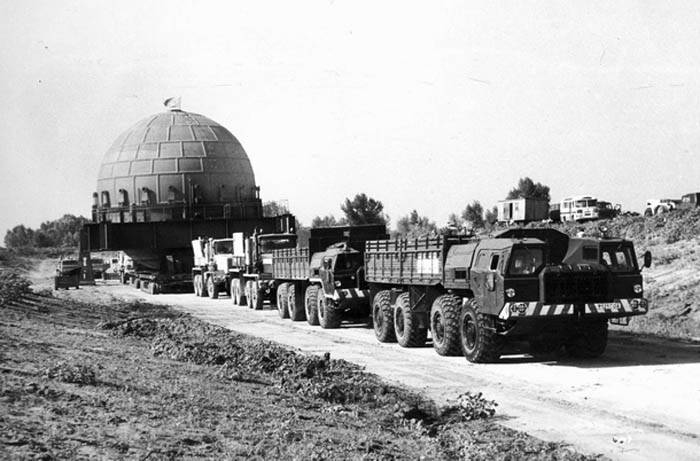
Transportation by land. Photo E-maksimov.livejournal.com
The first product XNUMHA, also received the index "JAVA" (decoding unknown), was built in the mid-eighties. On the internal rivers of the USSR, the product was transported by barge to the Astrakhan region, where they were taken to land. Then a road train with several tractors and a special trailer made a path about 13 km in length to the Galit area of the Azgir landfill. By this time, preparatory work was carried out at the site for the installation of ICS in its place.
The product XNUMHA was installed in a cylindrical underground structure-glass with a diameter of 13 m and the same depth. The concrete-metal structure had pipelines for filling the internal cavity with water. According to various sources, water was used to simplify the installation of the VLW at the bottom of the glass or was used for additional damping of vibrations during testing. There is also information about the top cover, which protected the whole complex from external influences and intelligence of a potential enemy.
At some distance from the underground structure located auxiliary facilities to ensure the conduct of research. The finished scientific test complex was put into operation in 1986. Perhaps, then, the first studies with the use of the 13YA CCS took place.
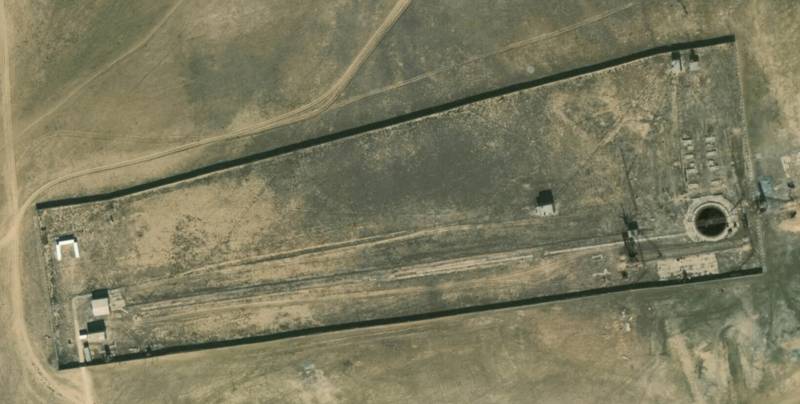
Satellite image of the site "Galit". Round silhouette in the lower right corner of the territory - a glass with java "JAVA". Photo E-maksimov.livejournal.com
Almost simultaneously with the first camera, XNUMHЯ produced a second one, known as 13YA13. It is curious that the SVK with a unit and a pair of two in the index were either absent or remain unknown. In terms of its design, 3YA13 was not fundamentally different from 3YA, but a completely different platform was used to install it.
The first few years of the 13YA3 existence are covered in darkness. This SVK was made in 1985 year, and its operation began no earlier than 1991. What happened to her between these dates is unknown. According to one of the versions, both cameras along the rivers and roads were taken to the Azgir training ground, but only one was needed. The second for several years remained idle, after which it was decided to transport it to another object.
At the end of 1991, the 13Я3 product was delivered to Moscow and placed on the site of the Research Center for Thermal Physics of Extreme States at the Joint Institute for High Temperatures of the Russian Academy of Sciences. It is possible that some of the available sources are wrong, and this or that information does not correspond to reality. However, so far there is no clarity on this issue.
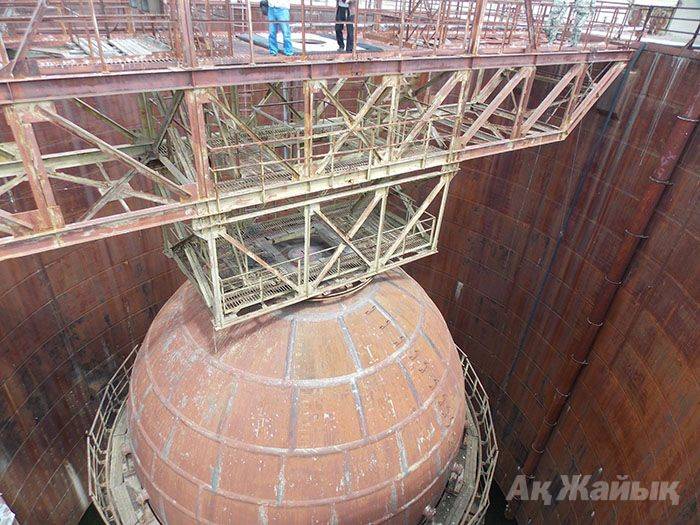
Abandoned camera 13Я, photo no later than 2013 g. Photo Azh.kz
SVK XNUMHЯ13 became part of the experimental stand "Sphere". Together with it, a cylindrical chamber ВБК-3 with a volume of 2 cubic meters is used in the “Sphere”. Initially, 110YA13 and VBK-3 stood in the open. Then, above the SVK, a frame was built with a flooring and a closed "house" above the upper hatch. Later the site was rebuilt. Directly on top of the chambers built a new capital structure. As the experimental setup developed, various devices were mounted and replaced to ensure its operation and research.
Secrets and secrets
Now JIHT RAS offers the installation of "Sphere" to interested organizations in need of special equipment for research. At this facility, several large studies of various kinds are conducted annually. So far, the ICS 13Я3 has made a significant contribution to the development of national science, and new results are expected in the future.
Detailed information on the operation of the 13Y product at the Galit site is not available. There is reason to believe that over the course of several years, with the help of this ICS, various studies and tests have been conducted, but their nature and purpose are unknown. In 1996, the Azgir test site was transferred to the jurisdiction of the scientific structures of Kazakhstan. After that, according to various data, the ICS for its intended purpose was not used. The last time the camera 13Я / "Java" was mentioned in media reports a few years ago. Then it was about the final transfer of the object to Kazakhstan. In addition, there were complaints about the lack of real prospects and the imminent destruction of the object.
В stories There are some gaps in the “Moscow” camera 13YA3, but its current status, goals and objectives are quite understandable. With the object, now belonging to a neighboring country, everything is different. The reasons and prerequisites for the construction of the test bench at the “Galit” test site, as well as the specifics of his work and the tasks set are still unknown. The lack of accurate information in combination with some "third-party" data leads to the most courageous assumptions.
In the past, the Azgir range was used to conduct various nuclear tests, including with the detonation of real warheads. This suggests that ICS XNUMHA was also created for research in the field of military or peaceful atom. However, confirmation of this version is not yet available or not found.
When conducting research, designing or testing nuclear warheads, it may be necessary to conduct research with explosions. For some of these works, explosive chambers are necessary, including large-sized and capable of withstanding high pressure. It is quite possible that the 13Y missile defense system on “Galit” was used precisely for testing individual components for advanced nuclear weapons. It should not be assumed that the actual nuclear charges were tested inside the product - the minimum power of such a product is beyond the capabilities of the ICS.
Successes of the past and present
Thus, in the eighties, several domestic scientific and industrial organizations were able to solve a particularly difficult task and create a unique sample of research equipment. Moreover, it was possible to build and put into operation at least two such complexes.
The product 13YA / JAVA was successfully put into operation and used to conduct secret research for several years, but then the research complex ceased its work. A few years later, work began on the 13Я3 “Sphere” facility, it still remains in service and regularly undergoes various upgrades.
Over the years of their work, two SVNs of the 13 family have provided for a multitude of studies and contributed to the development of Russian science. One of them continues to work and will remain in service in the future - it means that Russian scientists will be able to conduct new research that requires high pressures and temperatures.
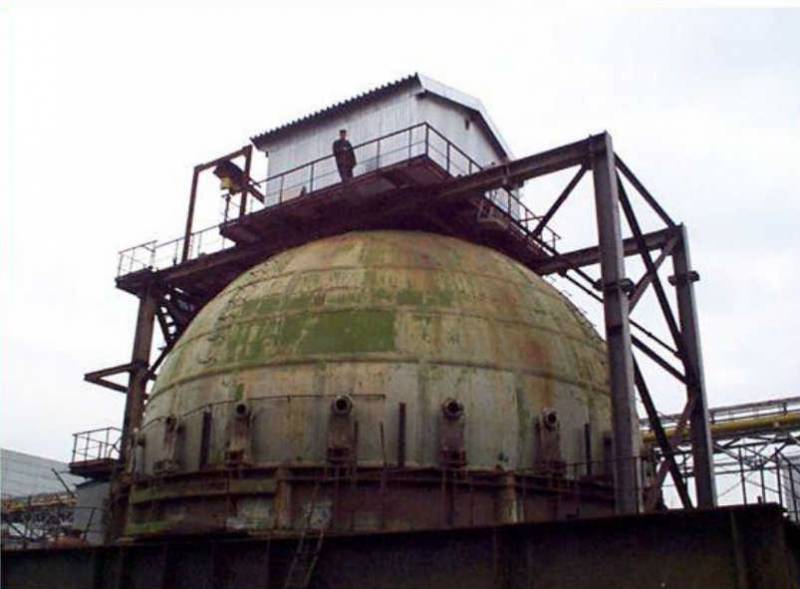
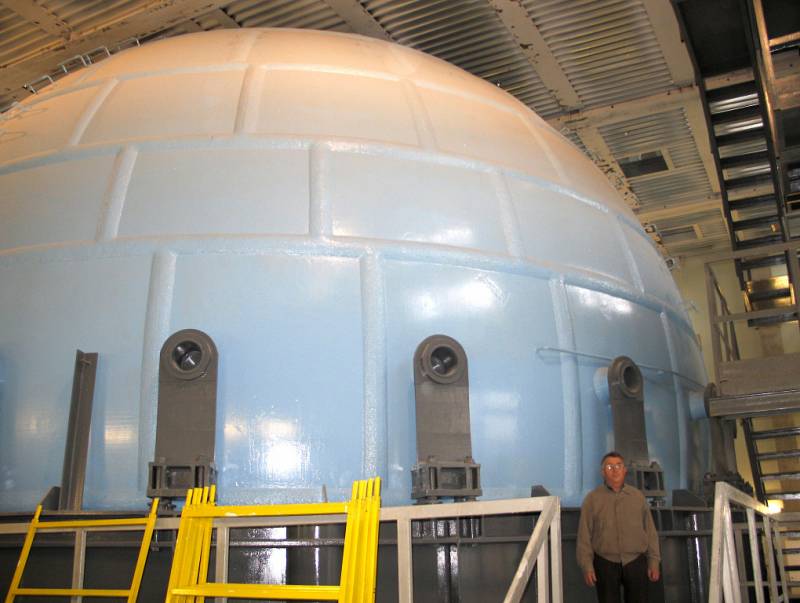
Information